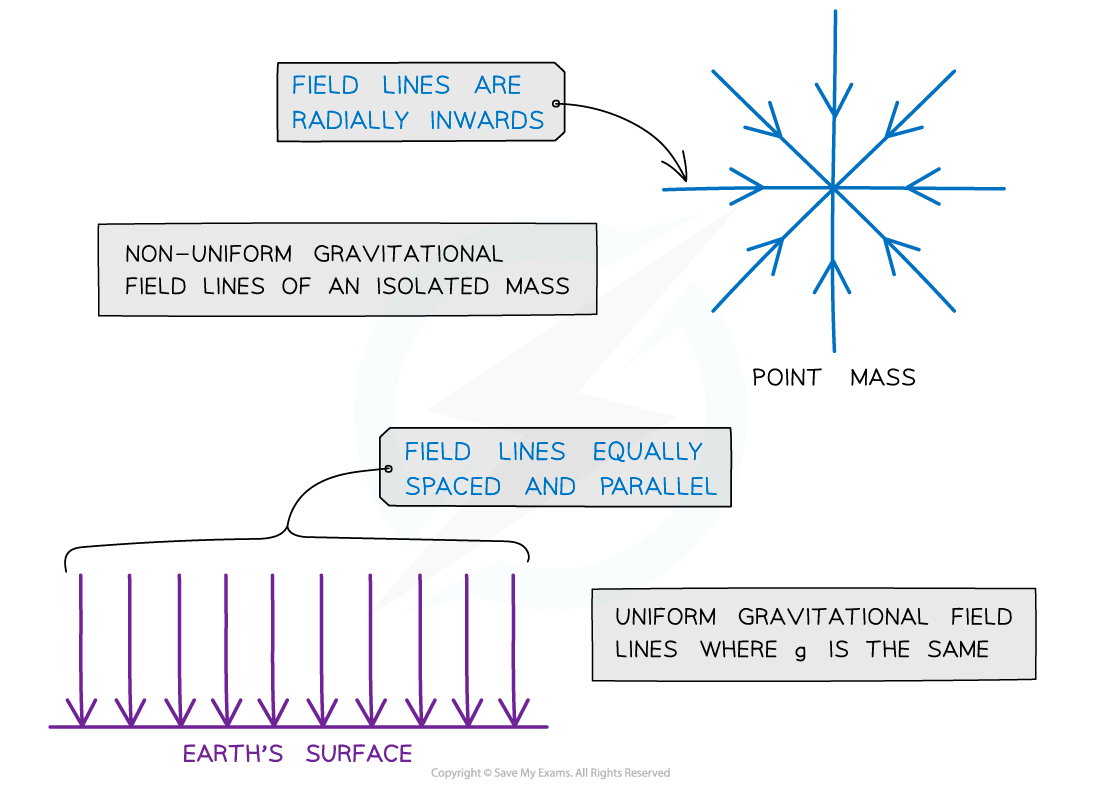Representing Gravitational Fields (AQA A Level Physics): Revision Note
Exam code: 7408
Gravitational Field Lines
The strength and direction of a gravitational field can be represented by gravitational field lines
The gravitational field lines around a point mass are radially inwards
The gravitational field lines of a uniform field, where the field strength is the same at all points, are represented by equally spaced parallel lines, for example, the field lines near the Earth’s surface

Gravitational field lines for a point mass and a uniform gravitational field
Radial fields are considered to be non-uniform fields
The gravitational field strength g is different depending on how far you are from the centre
Parallel field lines on the Earth’s surface are considered a uniform field
The gravitational field strength g is the same throughout
Point Mass Approximation
For a point outside a uniform sphere, the mass of the sphere may be considered to be a point mass at its centre
A uniform sphere is one where its mass is distributed evenly
The gravitational field lines around a uniform sphere are therefore identical to those around a point mass
An object can be regarded as a point mass when:
It has an even mass distribution and the distance being considered is larger than its size
For example, when drawing field lines around planets, the lines are drawn to converge at the centre

Gravitational field lines around a uniform sphere are identical to those on a point mass
Radial fields are considered non-uniform fields
So, the gravitational field strength g is different depending on how far an object is from the centre of mass of the sphere
Examiner Tips and Tricks
Always label the arrows on the field lines! Gravitational forces are attractive only. Remember:
For a radial field: it is towards the centre of the sphere or point charge
For a uniform field: towards the surface of the object e.g. Earth

Unlock more, it's free!
Did this page help you?